Restomods. All getting a bit boring, isn’t it? You can’t open Instagram or Twitter these days without catching sight of the latest beloved classic that’s been upgraded and improved in the name of parting people from enormous amounts of money. Take an iconic car, subtly (or not so subtly) inflate the bodywork, tune up the engine with trick parts, bolt on racing adjacent suspension pieces, ruin the stance with oversized wheels and super low profile tires, fit some age-inappropriate LED ring headlights, and presto: a restomod is birthed. That’ll be half a million dollars, please.
It’s gotten to the point where if you have the means, you can purchase a Porsche 911 with a 1980s TAG formula-one engine in the back (which sounds like the sort of car the phrase widow maker was coined for), but the race-used motors are detuned to only 500 bhp – a far cry from the 1000 bhp they would have made in the back of an MP4/2. Still, that such a thing exists demonstrates the difficulty in doing something unique in an increasingly crowded restomod market.
Often, I think these cars just end up being too much. Too much motor. Too much rubber. Too much wheel. Too much bodywork. Too much of everything, like a hat on a hat. And I can’t help but wonder how usable they really are. My suspicion is they end up being a real-life Hot Wheels treasure hunt, swaddled away in a heated warehouse as part of a collection. Cars that are purchased for what they are and who made them (cough *Singer* cough) rather than what they can do. Considering the idea behind restomodding was improving the driving experience over the original car, how many get properly driven?
It Began With A Beetle
Fortunately, there’s an antidote to this more-is-more approach. Enter stage left, the Kamm Manufaktur 912. Miklós (Miki) Kázmér is a Hungarian film maker-cum-tuner who began fettling Beetles (ugh) after the Iron Curtain came down. Eventually, he put two and two together and got five, grabbing a bunch of engineers to put his air-cooled tuning experience into something a little more desirable than the humble Beetle. And so, the first Kamm Manufaktur 912C was born.
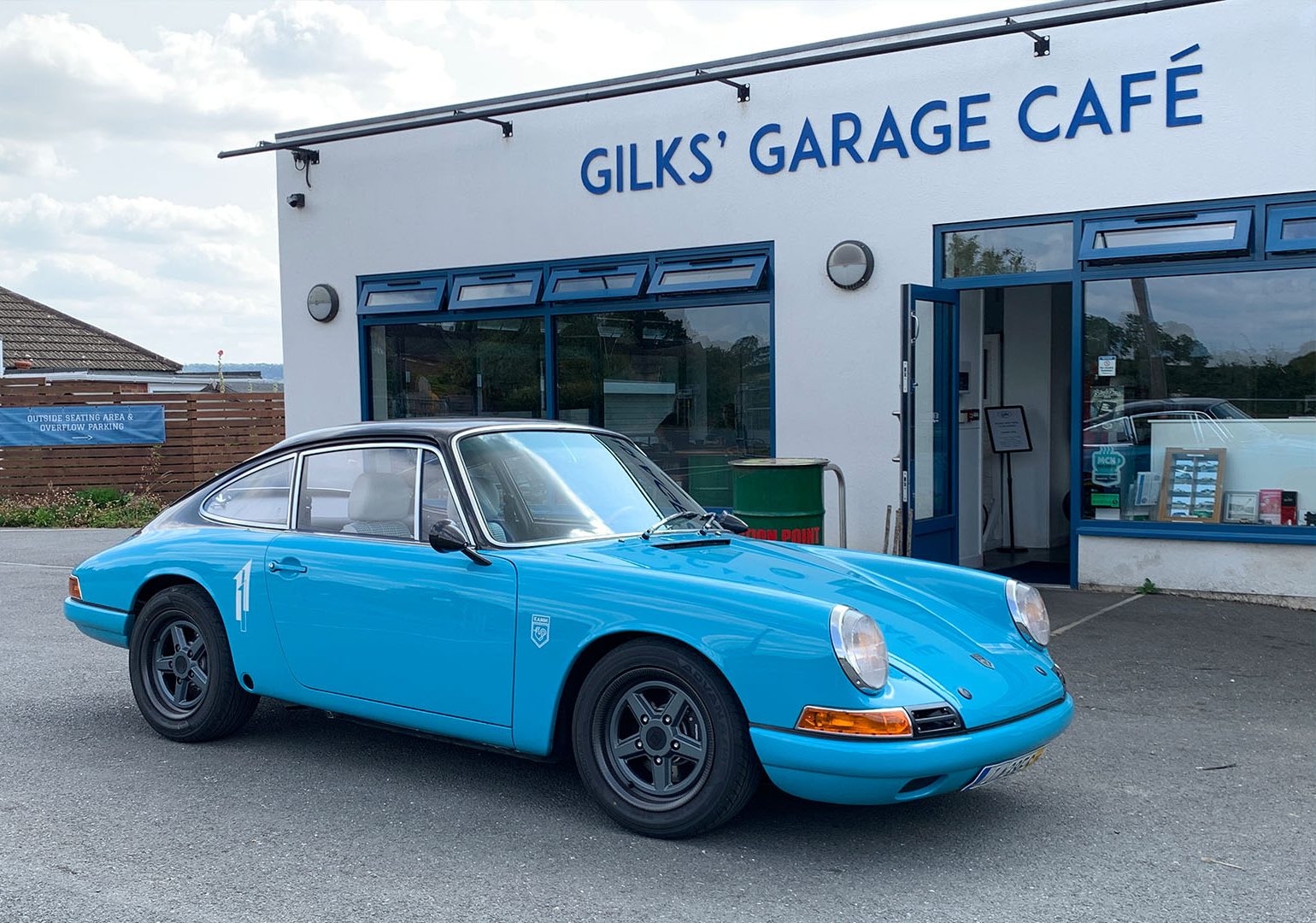
Porsche’s idea with the 912 was to replace the 356 with a cheaper, more economical version of the 911. Powered by the 1.6 ‘616’ flat four from the 356, the 912 was a much lighter and more forgiving car than the exotic and tricky handling 911. Over 30,000 were built between 1965 and 1969, when it was replaced by the 914. Because it was the lightest Porsche then available and the smaller engine provided better chassis balance, it was the perfect starting point for a usable, tractable rear engine Porsche that won’t try to kill you by spitting you off the road backwards if you get your throttle inputs wrong.
Starting with a standard 912 as a base (Kamm can source one for you or you can supply your own) three versions are available depending on how light you want your car to be: full carbon which weighs a sylph like 699kg (1540 lbs.), semi carbon (which has a carbon fiber hood, fenders and doors) at 750 kg (1650 lbs.) or all steel with carbon hood and fenders weighing a positively porcine 850 kg (1874 lbs.). That version falls into what Kamm calls its 912T ‘Touring’ spec, which has slightly less aggressive non-adjustable suspension geometry, a lower power engine coupled with less ferocious gearing, and a more comfort-oriented feature list including electronic HVAC, Bluetooth stereo connection with wireless phone charging, less restrictive seats, and sound deadening.
It Does What Lotus Has Forgotten How To Do
The version I got to spend an afternoon playing with was the full Lean Cuisine 912C ‘Carbon’ spec. With Lexan glazing, no soundproofing, a tiny Li-ion 12v battery and carbon fiber wheels at each corner, wet with all fluids and a full tank of gas, it weighs just over 710kg (1565 lbs.). Good thing I hadn’t had any lunch.
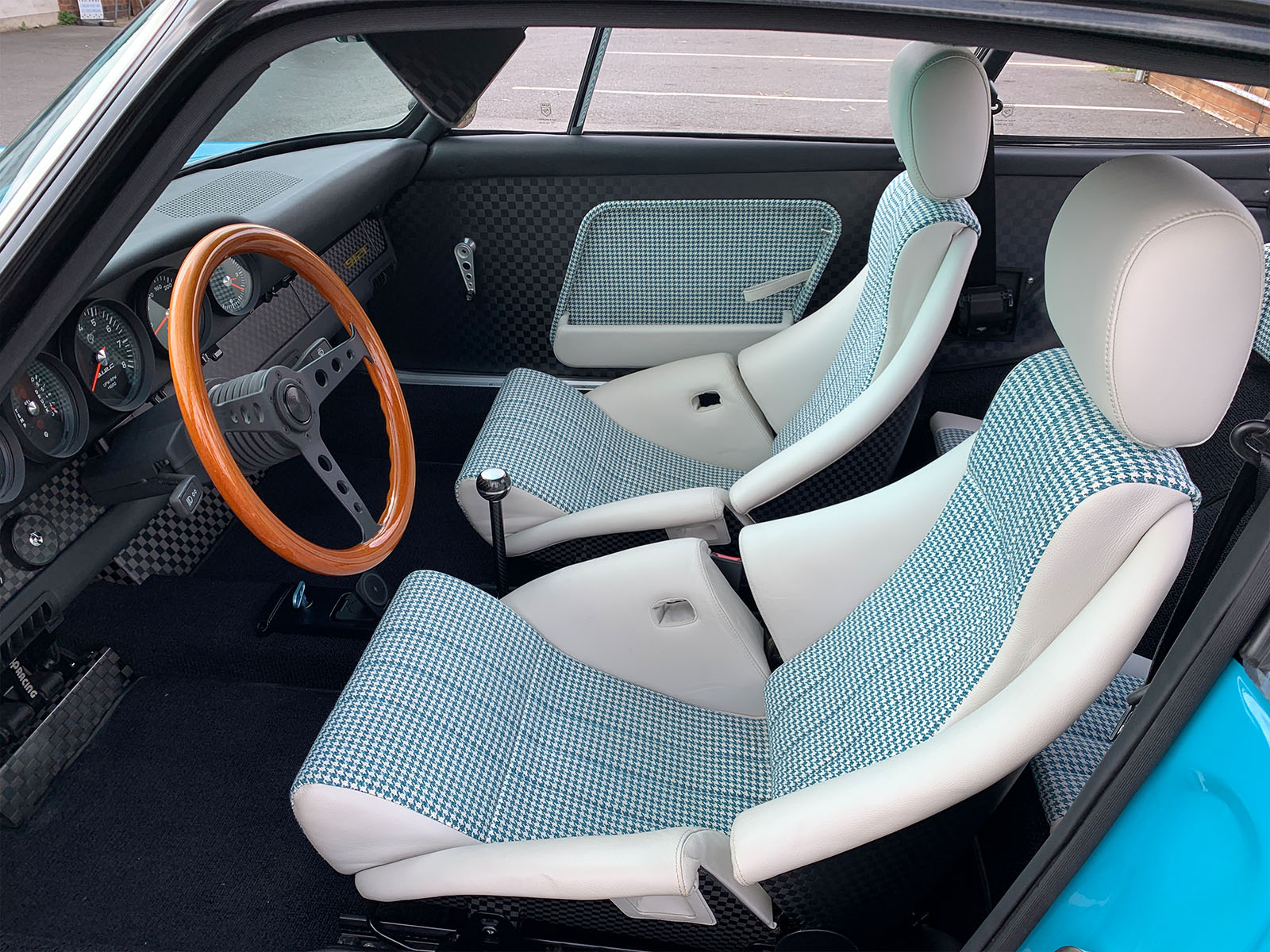
You might expect carbon doors to close with a twang, but Kamm put a lot of effort into making sure they slam with the trademark Porsche whomp. This diligence extends to the whole car. One of Kamm’s stated intentions is the maintenance of authenticity; i.e., making sure their car still feels and looks like a classic 912. Digitally-triggered versions of Smiths’ classic analog gauges outfit the dash, arranged in the traditional five-wide layout. The splendid seats are by Fusina, an Italian company that used to supply Porsche back in the sixties. The original steering wheel remains, its wooden rim polished. There’s no stupid LED lighting, just modern upgrades with better bulbs and reflectors. You could have one in a single color, option the look-like-steel carbon wheels or a set of Fuchs, and at first glance no one would be any the wiser. Right up until the moment you start it up.
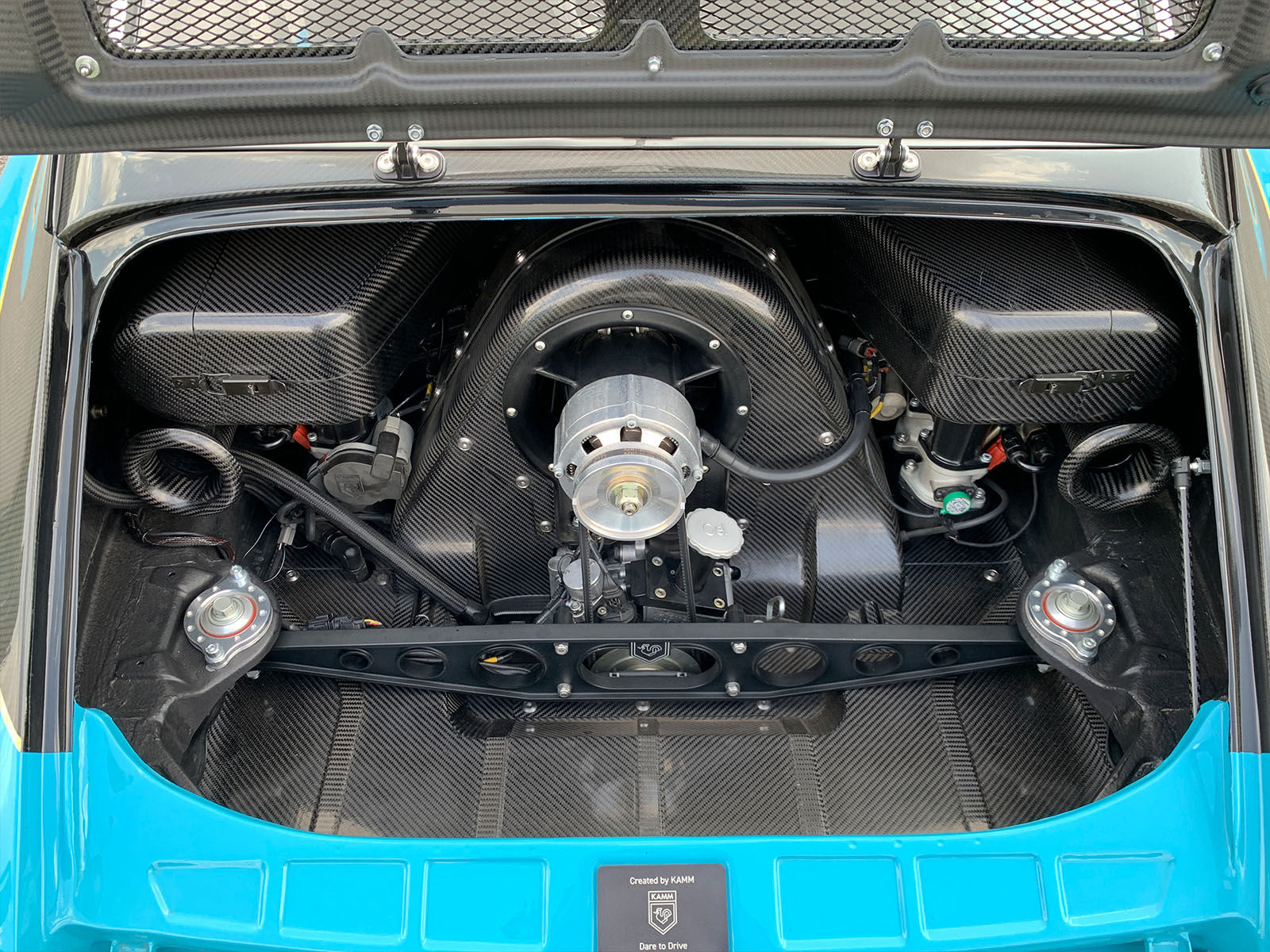
The engine is often the heart of a classic car, and the Kamm 912 is no different. It retains the original 616 bottom end, but the capacity is stretched out to two liters. Kamm initially enlisted the help of Swiss air-cooled specialists JPS, but in keeping with their desire to do as much in-house as possible, the motor is now mostly their own work with thousands of hours spent on the virtual dyno. There’s a bespoke carbon airbox and twin computer controlled independent throttle bodies that can work together or separately. Power output for the 912C is 182bhp and about 180 lbs. ft. of torque, most of it available from just 2000 rpm. The Touring is rated slightly lower at 163 bhp and 150 lb. ft..
Devil May Care
Twist the tiny key located to the left of the steering column, and initially the motor sounds dare I say a bit Beetle-y, with a familiar thrashy acoustic signature. Given those power and torque figures are apparently the highest specific outputs for an air-cooled engine, you might expect it to be a truculent, peaky bastard of a lump. There’s some fluffiness at maneuvering speeds below about 1500 rpm, but a prod of the beautifully machined throttle pedal soon sorts that out. The way around this is to keep the revs up and slip the clutch a bit when pulling away. As the tacho sweeps between about two thousand to three thousand revs and you’re getting into the meat of the power curve, the engine note changes from a free-form metallic rattle to something much harder and mechanically furious. The response, as you can imagine, is electric – every millimetric movement of your right foot translates into a corresponding rise and fall in engine speed all the way up to the redline. With no sound deadening and an entirely carbon fiber body, you hear and feel every variation in revs. It’s Rammstein as a flat four: very loud, mechanized theatrical chaos.
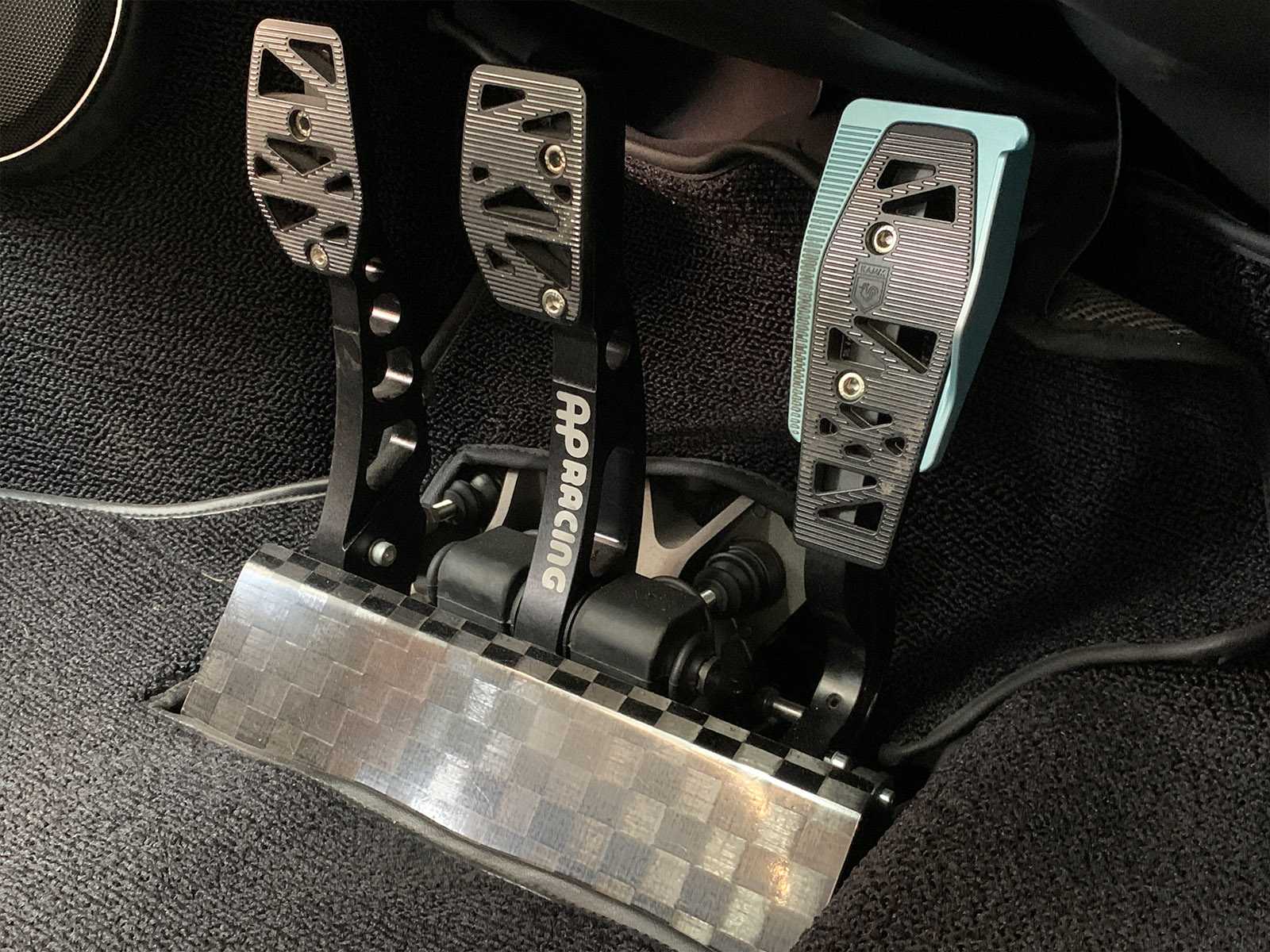
That sense that you can feel everything the engine is doing permeates through the whole car. There are two engine maps – a sleepy one that softens the throttle response and dulls the output a little, and a mode called ‘Devil May Care’ which uncorks the exhaust and the engine for the full output. Pootling through sleepy Oxfordshire villages in normal mode in search of an empty B road and hopefully lunch, as well as feeling the suspension working, you can hear it too. The structure creaks a bit, and the steering fidgets in your palms, but the overall feeling is of a car that’s incredibly alive, ready to spill all its dynamic secrets as soon as the road allows.
And as soon as it does, it’s Devil May Care mode engaged and off we go. The beauty of having ‘only’ 182 bhp is you can mat the 912C without fear of consequence. I’d call it quick as opposed to ‘bloody hell there goes my license.’ You can floor it out of second and third gear corners without so much as a squeak from the 205/55 R15 Yokohamas on the rear (fronts are a similarly sensible 195/55 R15). There’s no hint of squat or rearward body motion as you do so, so light and well-balanced is the chassis. On this carbon spec car, the suspension is five-stage adjustable Tractive coil overs. Softest (which is still quite firm) was best for scabby British bitumen. You still feel the bumps, but the excellent Fusina adjustable buckets and healthy tire sidewalls take the edge off the worst of it.
When it comes to steering and stopping, both are unassisted. Being so light, the 912C doesn’t need to be overbraked or you’d be locking the damn thing up every time you touch the stop pedal. The Brembo discs respond instantly to a firm application of Converse All Star with plenty of feel and power, although you don’t want to scrub off too much speed, as it will carry a decent amount of speed through the apex. I wouldn’t go as far as to say the 912C is a momentum car, though, given the throttle response and the way it picks up. The engine is not overburdened with flywheel, so should you back off the throttle with some lock on going into a corner, the 912C will wiggle its hips to let you know, despite its light weight, there is still an engine back there behind the axle, so don’t be too clumsy. That warning received, I made sure to get any slowing down in a straight line before nailing it on the way out. I couldn’t be sure exactly what speeds I was maintaining, as being a car bound for Europe the speedo was marked only in kmh. But really it was irrelevant. It felt fast and incredibly communicative, which is what the ethos of the 912C is all about.
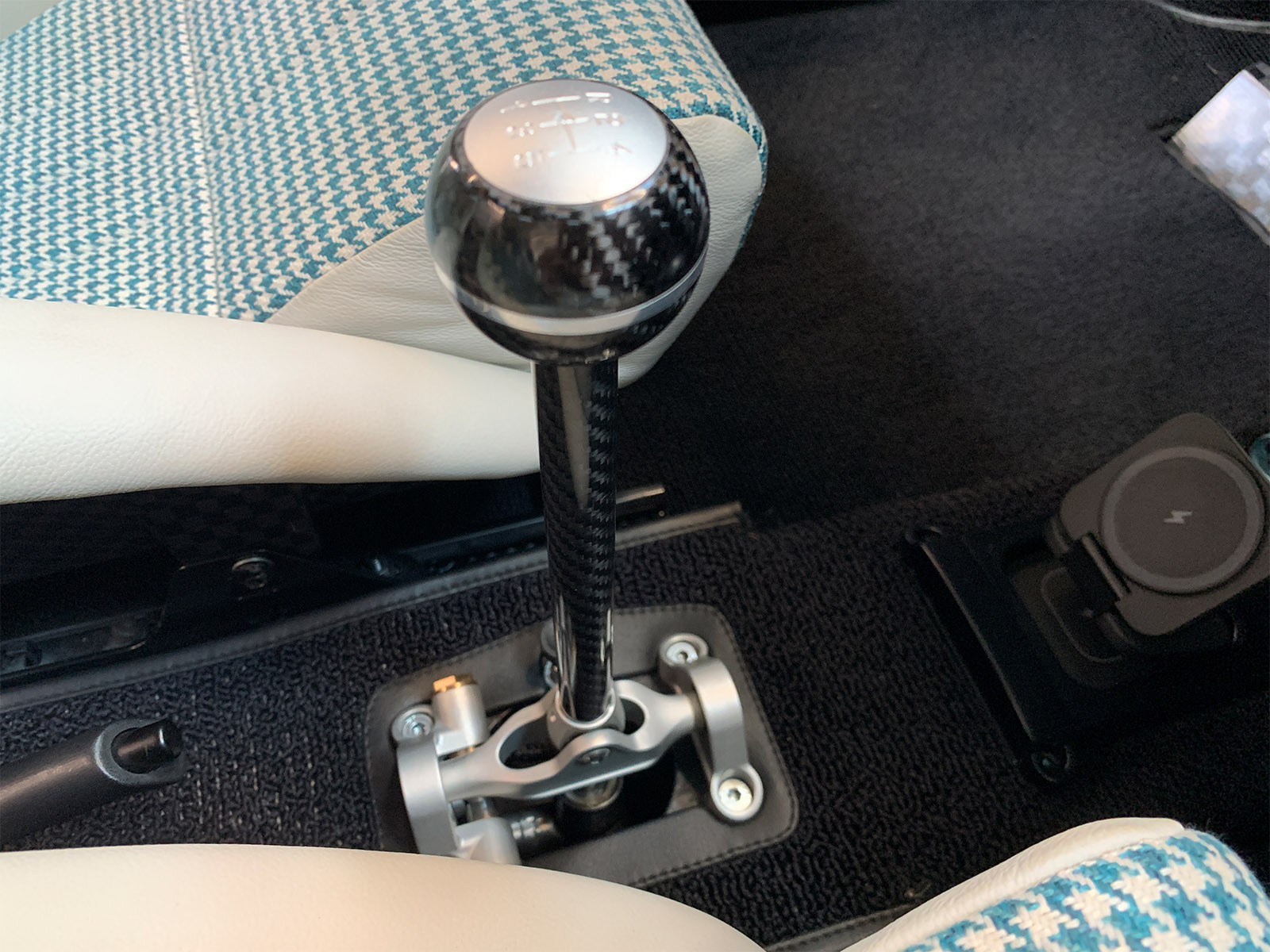
So we have a terrifically flexible engine and delightful chassis. What about the gear shift? The lever has been located in a more rearward position to bring it closer to hand, which creates space for a magnetic phone mount with wireless charging in front of it. Which my phone wouldn’t attach to. The stirring wand itself is again all carbon fiber with an exquisite exposed linkage at the base. I found the action mostly accurate but on the stiff side – an assertive hand is required. From a standstill, even with the clutch on the floor selecting first sometimes played a tune, and when pushing on, I missed second a couple of times until I realized the best technique was just to stuff the gear lever forward and let the gate sort it out, rather than aiming for where I thought second should be. Like the suspension, shift action is something that can be adjusted – I’d definitely want it lighter. The actual gearing itself is also something that can be altered to the buyer’s requirements: either short, a short bottom four gears with a longer fifth, or a full longer gear set for touring. All are slotted into the original Porsche casing.
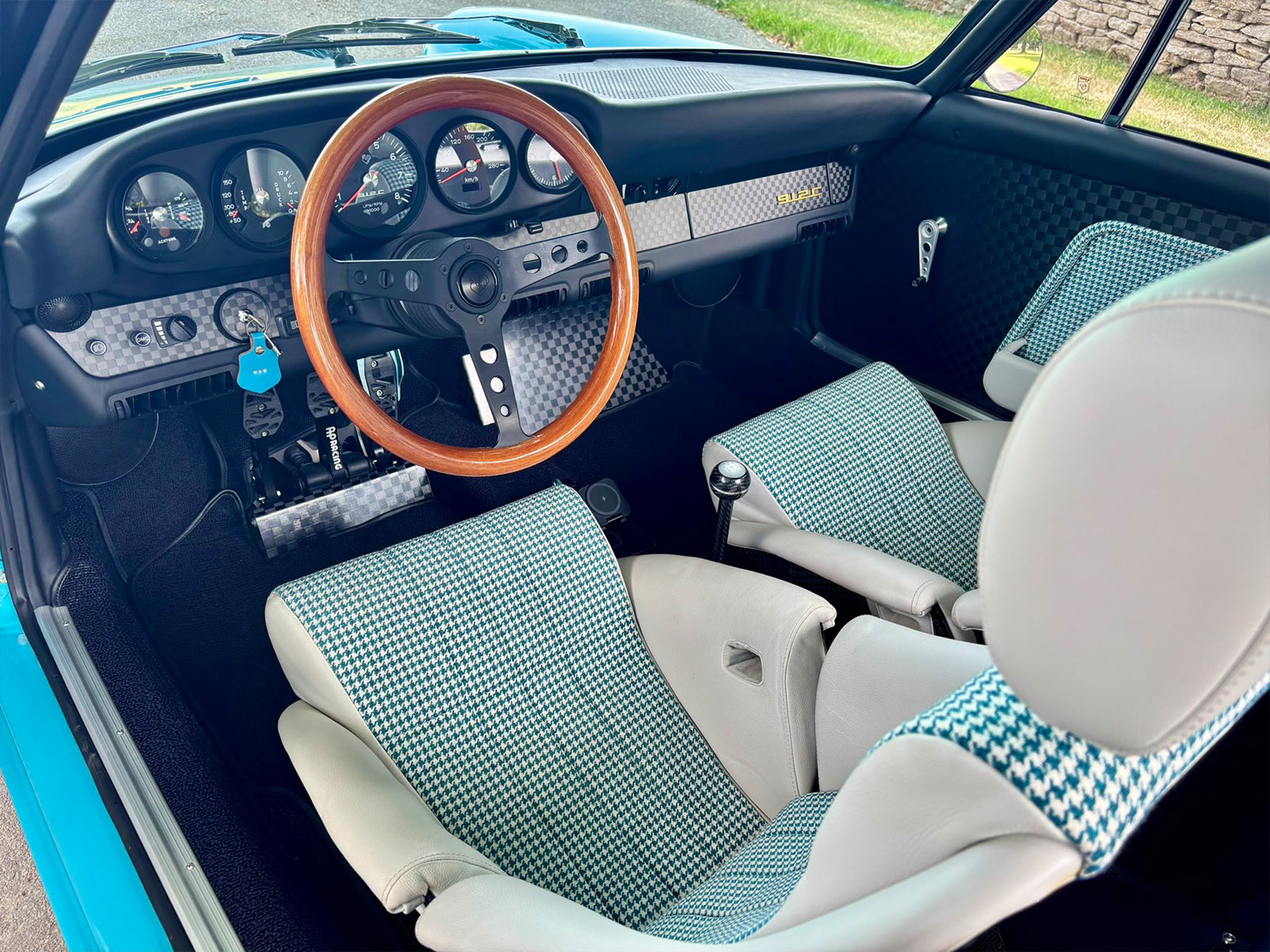
The one dynamic area perhaps not in keeping with the rest of the car is the steering. Although the rack is fast at 2.4 turns lock to lock, it lacks a touch of initial bite, and I would prefer more heft to lean on in bends. I need to pick the splinters out of my butt and hedge my criticism a bit here by saying this is an extremely light car with not a lot of weight in the nose, so that slight wooliness is to be expected. Nonetheless, you can park easily without rupturing any organs, which fits in with keeping the 912C usable, even in this extreme spec. On the M40 heading back to Bicester Heritage at – ahem – decent motorway speeds, it does require you to hold onto it. Despite all the hours in virtual wind tunnels refining the aero, this is still a sixties car with a sixties shape. It’s not difficult by any means. Just pay a bit more attention than you would in a modern car.
It’s Totally Liveable
What all this adds up to is a thrilling, mechanically alive car that isn’t really compromised in any way. There’s luggage space under the front hood with further storage hidden under a lift-off carbon fiber lid. You’ve still got the useless plus two rear seats, beautifully trimmed in the same houndstooth pattern as the fronts. There are USB ports hidden in the glovebox. The HVAC vents are tastefully integrated into the lower part of the dash for an OEM look. There are door bins. The traditional rear-engined Porsche characteristics remain – ergonomic excellence coupled with a handy size and great visibility. The Kamm 912 doesn’t feel like a load of overdone parts competing for your attention. It feels like a considered, holistic car that stimulates and rewards you at sensible speeds. Is it noisy? Yes. Is it a touch awkward? Occasionally, yes, but what classic car isn’t? Does it go well? Plenty fast enough thanks to that incredible weight figure, and not that it matters, I bet that also helps gas mileage as well, which is something to think about when it comes to road trips. Is it a glorious experience overall? You bet your life it is. When I parked up outside a pub to take some photos, I had a moment as I closed the door where I thought to myself, “this is just a bloody cool car.”
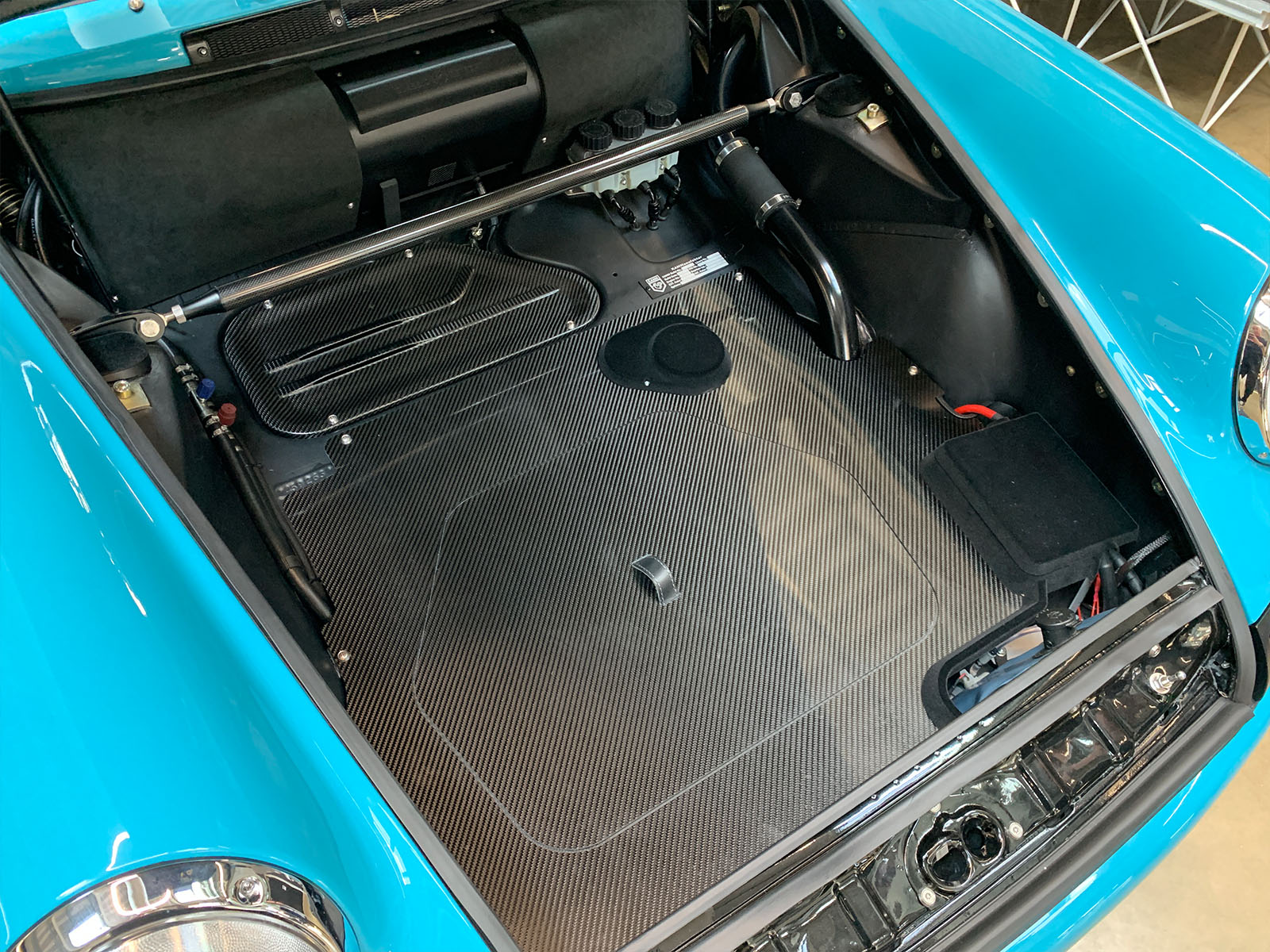

This car is number two. Kamm are now up to number seven. The waiting list is about a year, and options depend on you; you’ll need to sign a check for a minimum of about €400,000 ($460,000). As you’ve probably gathered, specs are not set in stone, and you can mix and match options and configurations. Rolling improvements are being made all the time, including a forthcoming increase in power. So by the time you get yours, it will be even better. I will take a Touring spec Targa with the more powerful engine and Fuchs alloys in black or Rubystone, please. But you know what the best thing about the Kamm 912 is?
It’s not a sodding 911.









Wake me up when they apply the same wizardry to a Triumph TR6.
One of the few British Sports cars I like.
One languishes in my garage. I’m mystified by the meteoric rise of Datsun 240Z values while my very similar TR6 falls through the cracks.
Weeboo effect.
Well written as usual Adrian.
What a time to be alive that there seems to be so many small boutique outfits like this ‘reimagining’ or creating what they see as their ‘what if’ perfect version of xyz make/model
It all.works until the price revel. 100% I understand these are hand crafted and that takes a lot of man hours, still it is impossible not to think how one can achieve this kind of experience at 1/10th the asking price.
A well sorted 914 certainly would be an obvious choice, though the looks also certainly an acquired taste Or a 924, though you would loose the engine in the wrong place feel that can only really be experienced by a rear engine vehicle.
Possibly another obviously choice would be a well sorted and tastefully massaged Karmann Ghia, though it of course will never be a Porsche.
My immediate thought went to a well sorted Elise as they are rare enough to be unique and yet their values haven’t skyrocketed (yet). It has the lightness out of the box and the right driving feels and should be able to be driven around legal speeds on twisty roads as to be throughly enjoyable
The 912 was a cheaper lighter version of the then new Porsche, however the only tricky handling 911 was the 911S. The power and rear roll stiffness would inspire it to swap ends faster than a swing axle 356.
I can see making light weight replicars, but chopping up history to make new rich persons toys makes me want to puke. Mind you I also feel bad in retrospect about some hollowed out cars in my past. If you are doing it maybe you can’t see it.
Looks brilliant. One question, why do so many Brits hate on the 911? Not that it matters to me, I drive a 718 Cayman.
I don’t think they do, I’m just a cantankerous bastard.
You had me at “mechanically alive.”
As opposed to ‘technically alive’ which describes me.
Really nice car, but also crazy expensive. I always read about these minimalist lightweight cars and think “Wow, maybe someone stripped all the fluff out of cars and made something fast and interesting and affordable.” Well 2 out of 3 isn’t bad.
It takes time and labor, which is not cheap.
Great review. Not surprised it’s so much but nice to see a resto mod more focused experience than speed.
A million times this.
no, just 400 000 time…
I kind of feel like cars like this are the automotive equivalent of a guy loudly ordering a Goldschlager at a cougar bar…
It was a sad day a while ago when I realised cougar now meant ‘attractive women my own age’.
Unless you’re in Wyoming, in which case “hot cougars in your area” means check your porch carefully or you’ll likely get mauled by a panther-sized murder machine.
If not friend, why friend shaped?
Ship of Theseus. With so many of the original parts replaced, when does it stop being a 912?
It contains the original block, crank, gearbox casing, fuel tank and chassis as a minimum. Plus a whole load more if you get the Touring.